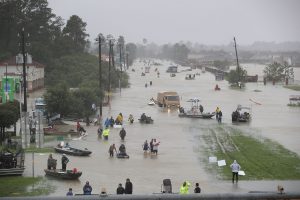By Ana Maria Hanssen

ARGENTINA:
Buenos Aires is going through the unimaginable; there’s no meat, anywhere. This quite possibly could be one of the worst moments in history to be a visitor. Protests, chaos, a bouncing dollar and even the risk of having something stolen could seem folkloric to those tourists looking for a little adventure.
But sitting down at a Buenos Aires “parrilla†and being told that none of Argentina’s famous red meat is being served, that’s as close as unacceptable as a person can take. So where’s the meat?
It’s on strike.
For the last twenty days, Argentina’s farmers have set up posts along major highways and prohibited the free circulation of all cargo trucks in protest of the government’s seemingly excessive tariffs on exports. Supermarkets and restaurants have already begun to feel the backlash in the aisles and at the tables with meat and milk products as the main product in deficit.
Near my apartment, I hear drums beating in the streets of San Telmo, Buenos Aires’ classically colonial barrio. Old, not so old, and not old enough, all gather to take part in a “marcha†where thousands carry signs and banners belonging to their different political peronist groups.

Supporters of Argentina’s President Cristina Fernandez de Kirchner, trade unions and social groups gather in front of the presidential palace in a planned rally to back the Argentine leader in Buenos Aires April 1, 2008. Farmers nationwide continue to man roadblocks to protest a tax hike on soy exports causing food shortages and disrupting grains exports. The march comes a week after thousands of middle-class Argentines banged pots and pans in the capital’s streets in support of the farmers.
(SOURCE: REUTERS/Santiago Pandolfi)
They sing and beat drums and their beat is far from friendly and inclusive. Today, April 1st, they are all marching towards Plaza de Mayo. This plaza has been the plaza of the people, where the Mothers of the disappeared have met to demand the whereabouts of their missing, where Argentines gathered to see the return to democracy and also to watch it be arbitrarily shelved.
Today’s march is in support of Cristina Kirchner’s government, who has come under fire by the farming community and the large part of Argentine society who supports it. Unlike a conventional political demonstration, this one is organized directly by the government.
President Kirchner, who claims to be the president of all Argentines, has asked the farmers to lift the strike and at the same time has asked people to march in support of her government.
I don’t know if she’s literally asked for this support, if she’s actually picked up the phone and told someone to tell all her supporters to turn on the political machine and fill up the plaza with supporters or if she’s done so indirectly. What I do know is that today’s march will help to further polarize the country between those who are in favor of the “farm†and those who stand behind the government.

Argentines march with their pots and pans in support of farmers.
Those who support tariffs imposed in order to limit exports, and those whose livelihoods come from the land who now have to pay these tariffs in addition to all existing taxes.
They say agriculture is dying. Cristina Kirchner, on the other hand, claims it’s a strike imposed by the 4×4 driving, land-owning oligarchy that have seen profits increase at the expense of the working class.
Out on the streets, the drums are still beating in favor of the president. And the divisions continue to grow. Those who claim that the government is itself an oligarchy that outwardly claims to emulate the Cuban and Venezuelan systems. Those who, according to Cristina, defend and helped bring to power the genocidal dictatorships of the 1970s.
This coming from the very president who supported and participated in the Peronist militias of the same decade, who openly uses the image of Perón the demagogue in order to rally and bring together an Argentina that no longer exists.
Even though I have just started to understand the Argentine political machine after a year of living here, I still see things very much as an outsider. I see a country that is rich, and at the same time, extremely poor. I naturally compare it to Colombia, my country, whose agricultural sector is also dying and who is suffering the effects of a violent five-decade old conflict.
And even though I see strong divisions within Argentina, I think it’s admirable that people still take to the streets to protest armed with pots, pans, flags, or just their voices and hands. Poor neighborhoods, rich neighborhoods, those for the farmers and those against, all take the streets to protest, refusing to remain quiet.
I’m left wondering if Colombia hasn’t been submerged in a profound political and social lethargy that doesn’t allow us to react to our situation.
For now, the Plaza de Mayo continues to fill. The cows still haven’t come home. And Colombia remains dormant.
The following video was shot by Argentina-based journalist Taos Turner for his blog The Argentine Post. He interviews a 16-year-old son of a farmer who has joined a massive street protest against the government’s statements regarding the farmer’s strike.
Learn more about Ana MarÃa
Ana MarÃa Hanssen is a 30-year-old Colombian journalist and freelance writer currently living in Buenos Aires, Argentina.
She is the author of “Holocausto en el silencio”, a book that details the 1985 siege of the Supreme Court palace in Bogota by the M-19 guerrillas – one of the most painful episodes in Colombian history.
As a result of the Army’s violent reaction to this equally violent act, more than one hundred people died — including the nation’s Supreme Justices — eleven still remain missing.
The book won the Colombian Literature Prize for best non-fiction book in 2006.
Ana MarÃa has worked for media in Los Angeles, California; México, Colombia and in her new home, Argentina.





Comment(2)
RocÃo Arango
I think that in Argentina, with Cris K. government, suffers “Epidemia Bolivariana” too.
Texano78704
While I’m no expert on Argentine politics (or those of Venezuela), I think it is a bit unfair to categorize Argentina’s current problems as part of the “Bolivarian Epidemic.”
All of Latin America cannot be like Colombia, where the liberal party and conservative party are merely two sides of the same coin.